Plato was a philosopher in Classical Greece and the founder of the Academy in Athens, the first institution of higher learning in the Western wold. He’s widely considered the most pivotal figure in the development of philosophy, especially in the Western tradition. Unlike nearly all of his philosophical contemporaries, Plato’s entire work is believed to have survived intact for over 2,400 years. Take a look below for 30 more fun and interesting facts about Plato.
1. Along with his teacher, Socrates, and his most famous student, Aristotle, Plato laid the foundations of Western philosophy and science.
2. In addition to being a foundational figure for Western science, philosophy and mathematics, Plato has also often been cited as one of the founders of Western religion and spirituality.
3. Plato was the innovator of the written dialogue and dialectic forms in philosophy.
4. He appears to have been the founder of Western political philosophy, with his Republic and Laws among other dialogues, providing some of the earliest extant treatments of political questions from a philosophical perspective.
5. Plato’s own most decisive philosophical influences are usually thought to have been Socrates, Parmenides, Heraclitus and Pythagoras, although a few of his predecessors’ works remain extant and much of what we know about these figures today derives from Plato himself.
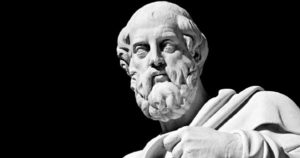
6. Ariston, Plato’s father, descended directly from kings of Messeina and Athens.
7. Perictione, Plato’s mother, is believed to be a descendant of an aristocrat named Solon. According to historians, Solon was a Greek statesman from 6th century BCE.
8. According to some historians, Plato was actually his nickname and his real name was Aristocles.
9. Aristocles was Plato’s grandfather’s name and some historians suggest that Plato was the eldest grandson of Aristocles and that it was customary in Greece during Plato’s time to name the family’s eldest son after his grandfather. Historians don’t really agree on this, with some arguing that there is no definitive proof of Plato being the eldest son in his family.
10. Since Plato belonged to an aristocrat family, he received his education from some of the finest educators who were present in Athens at the time.
11. During his education, Plato was taught about doctrines of Parmenides, Pythagoras and Cratylus. These doctrines possibly molded Plato and laid down the foundations for his study of epistemology and metaphysics.
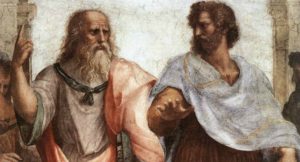
12. His mother married his uncle after his father’s death. Historians believe that Plato had one sister, two full brothers and one half brother, but they’re not sure whether he was the eldest son of the family or not.
13. During the Peloponnesian War in which Sparta defeated Athens, Plato served as a soldier between 409 and 404 BCE.
14. Most of what is known about Socrates is based on what Plato wrote about him, as Plato was Socrates best student.
15. Plato was about 19 years old when he became a student of Socrates and remained faithful to him until Socrates death in 399 B.C.
16. After Socrates’ death, Plato fled Athens and may have traveled as far away as Egypt, where he studied history and mathematics. His writings on Egyptian customs and games seem to indicate that he really went to Egypt.
17. Plato’s Academy provided a model for universities and social and scientific academies that developed later. His students, which included Demosthenes, Aristotle, Lycurgus and several women, studied mathematics, philosophy, law and music.
18. When or why Plato wrote his dialogue is not known. His most famous works include The Laws; The Republic, an outline for an ideal government; Symposiums, featuring guests sitting around a banquet discussing ideal love and beauty; Apology, a compelling portrait and defense of Socrates; and Timaeus, a discussion on the nature of the universe.
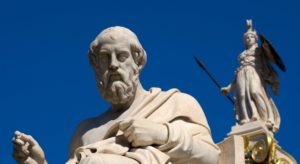
19. Plato developed a number of philosophical theories on topics such as knowledge, government, human conduct and the universe.
20. Plato and his followers believed that the source of the “real” forms he sought was in mathematics and geometry. The Platonic view of the world was built on the foundation of ideal mathematics.
21. Plato accommodated different viewpoints by saying that they could coexist on different levels in his Theory of Forms, which is sometimes translated as Theory of Ideas.
22. The Roman Emperor Justinian I considered Plato’s Academy to be a threat to Christianity and closed it completely.
23. According to some historians, Plato died peacefully in his sleep sometimes around 348 BCE, while some others believe that he died while he was attending a wedding.
24. Plato was known for writing dialogues. He strongly believed that dialogues helped understand an individual in a better way.
25. Plato discussed his views on what became known as the Platonic love in The Perfect Union. He viewed lovers as incomplete halves who couldn’t find peace until they found each other.
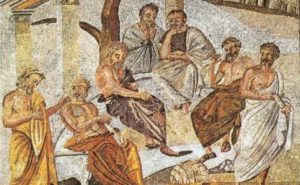
26. His pondering in The Symposia are the oldest known attempt to systematically unravel the mysteries of love.
27. He’s credited with being the first to put down in writing the belief that there is, “only one person in the world for me, without whom I am lost.”
28. Plato denounced the material world and the pleasures of the flesh, which is one reason why he was so popular among Christian theologians.
29. He developed the concept of an immortal soul that would shape concepts of death and the afterlife in Western philosophy. His concept of the soul was connected with his view of higher order of reality beyond that in the perceived world.
30. His concept of death was similar to that of reincarnation. After death, a soul enriched by knowledge and notion of good, beauty and justice, Plato theorized, rose to higher planes in the universe.

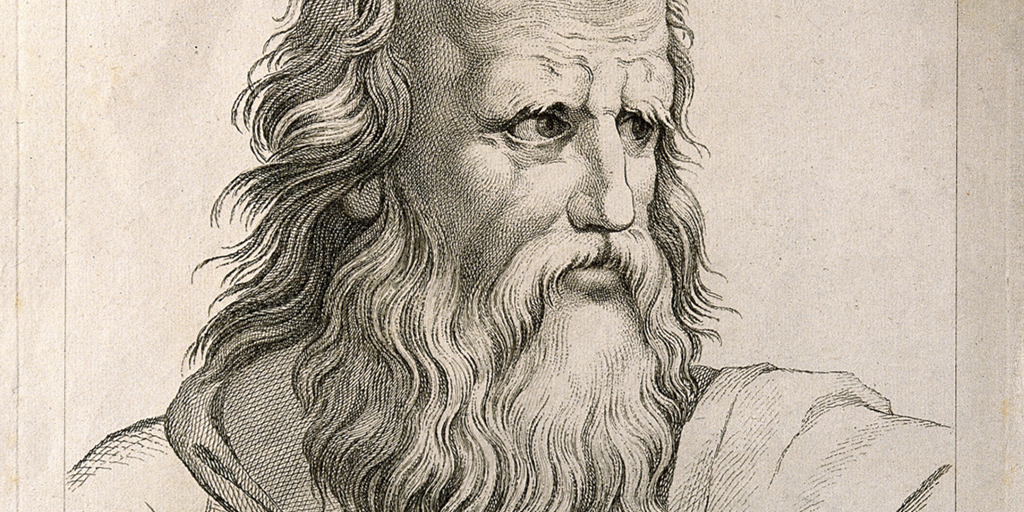



3 Comments
Pingback:
May 27, 2018 at 5:40 pmPingback:
June 4, 2018 at 11:24 amPingback:
June 9, 2018 at 11:28 pm